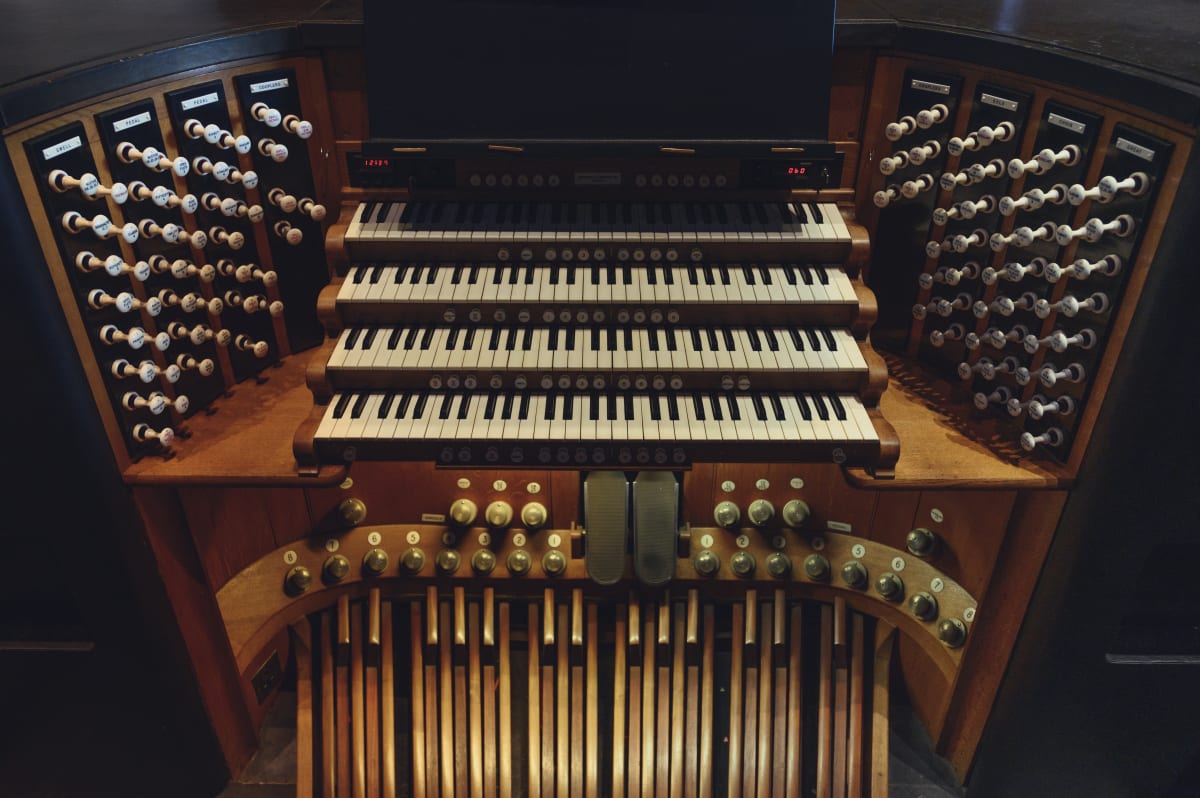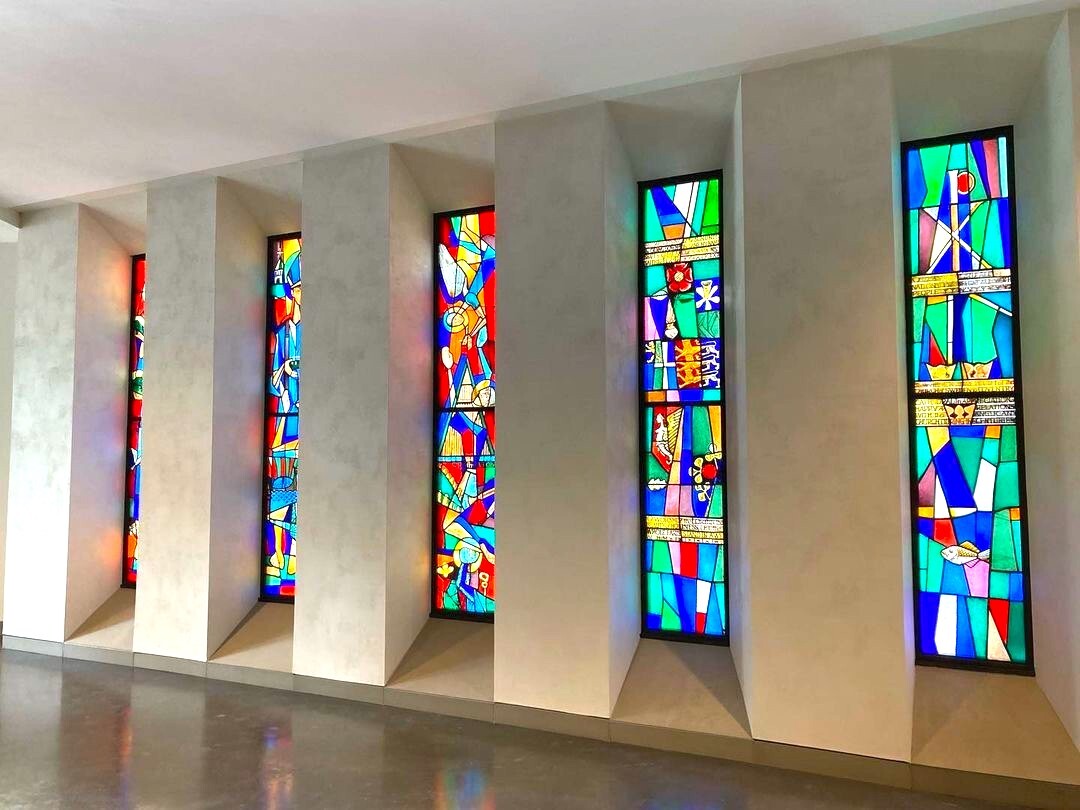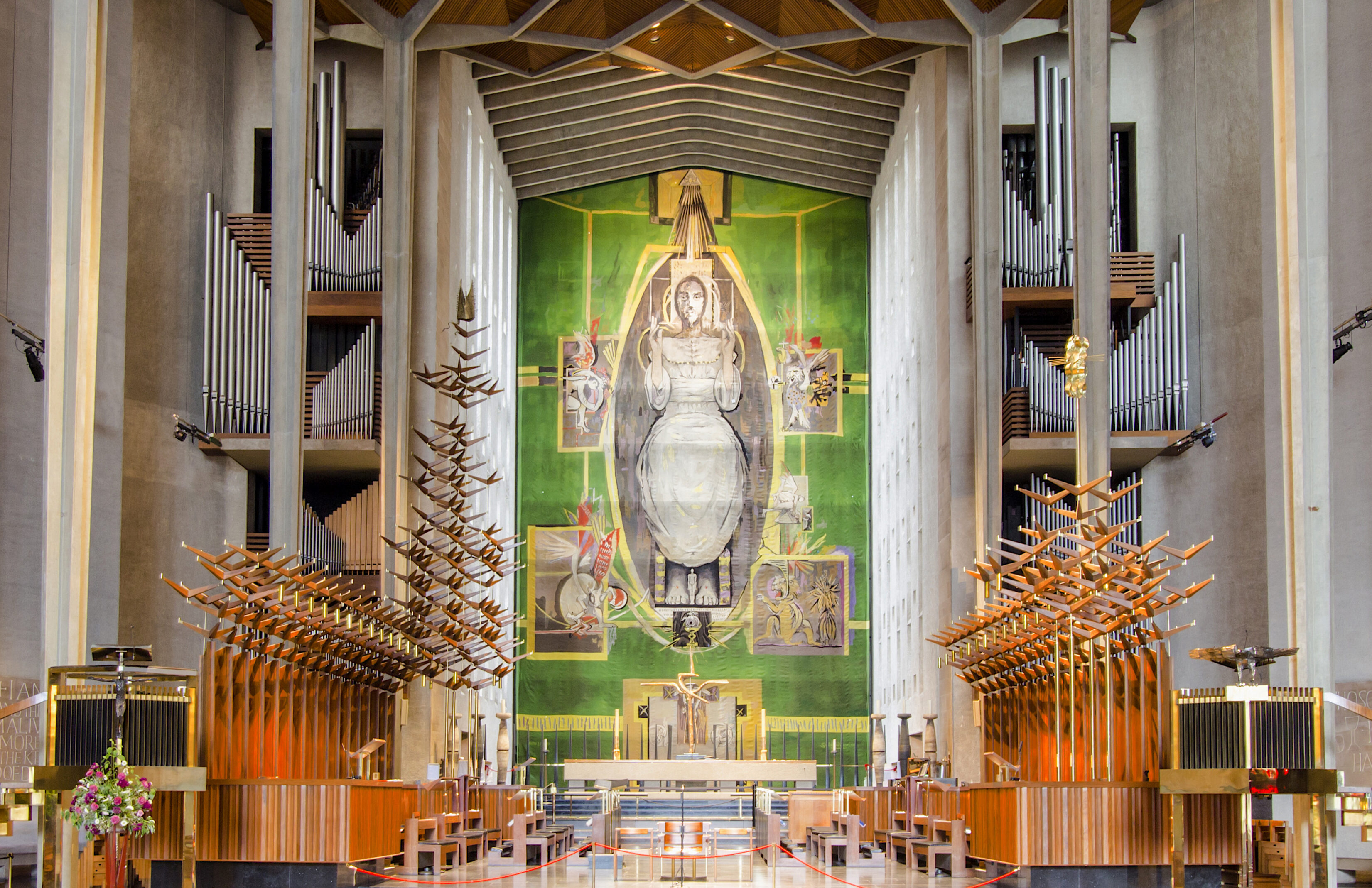When you come to see us, it's best to see the Ruins first (ideally entering from Cuckoo Lane) and only then to explore the New Cathedral. In both cases, you'll understand and enjoy them much more, if you know what to look for and what it means.

Opening times
Sun 12:00pm–3:30pm
Not quite 500 years
As mentioned in the timeline on the History page, the Ruins wasn't Coventry's first cathedral - the first one was destroyed in Henry VIII's time, in the Dissolution of the Monasteries. In fact, magnificent as it was, the Ruins you see today only was a cathedral for the last 22 of its 490 years. Until 1918, St Michael's was simply an impressively large, traditional parish church.
Ruin and resolve
A decade before its 500th birthday, the bombs fell.
Today you can see the ancient walls, the burnt cross, made from charred remains the morning after the bombing and several works of art, installed since. These include Jacob Epstein's sculpture of a defiant Christ in chains before Pontius Pilate. Fittingly, perhaps, it was widely loathed and mocked when created in 1934 (the Daily Mirror refused to show a photograph of it). Now, with its ancient South American influences, it looks impressive and way ahead of its time.
The Ruins as a whole is a testament to the destruction of both the Cathedral and, on the same night in 1940, much of Coventry. Already that year, Coventry had suffered 17 bombing raids, causing 176 deaths. Then, on the night of 14th November, so many bombs were dropped during a single raid that over 4,300 Coventry homes were destroyed and 568 people lost their lives. The centre of Coventry was all but obliterated. (Find out more about what life was like in wartime Coventry by visiting our Blitz Museum.)
Yet, from the very next day, the determination grew amongst the Cathedral and the people of Coventry to seek reconciliation, not revenge - and to express that determination in preserving their destroyed cathedral beside a new one, devoted to transforming attitudes.
 1. The Ruins
1. The Ruins
The Ruins are the remains of a medieval parish church. Hit directly by several incendiary bombs, the Cathedral burned with the city on the 14th November 1940.
Read more 2. Tower Climb and Shop
2. Tower Climb and Shop
Soaring over 100 metres high, this Gothic masterpiece survived the bombing and is now the third-tallest in England.
Read more 3. The New Cathedral
3. The New Cathedral
Sir Basil Spence’s 1962 masterpiece embodies both the stark and the beautiful, to powerful effect.
Read more 4. Tapestry of Christ in Glory
4. Tapestry of Christ in Glory
Designed by Graham Sutherland, this impressive tapestry was woven by hand on a 500 year old loom and was at one point the largest continuously woven tapestry in the world.
Read more 5. Chapel of Unity
5. Chapel of Unity
The principle of a Chapel of Unity binding the Church of England and the Free Churches together for Christian service in Coventry was born out of the sufferings of war and the ecumenical enthusiasm of the church leaders.
Read more 6. Chapel of Christ in Gethsemane
6. Chapel of Christ in Gethsemane
This quiet, small chapel serves as a reminder of suffering and a place of prayer and contemplation, away from the focal point of the Cathedral.
Read more 7. Baptistery Window
7. Baptistery Window
The masterpiece created by John Piper is made of 198 brightly coloured glass panels and measures 26 metres high.
Read more 8. West Screen
8. West Screen
The impressive large glass ‘west’ screen was designed and hand engraved by John Hutton over the course of 10 years, and features 66 figures depicting saints and angels.
Read more 9. Chapel of Christ the Servant
9. Chapel of Christ the Servant
Also known as the Chapel of Industry, because the surrounding buildings used all to be industrial
Read more 10. The Nave
10. The Nave
As well as housing the stunning Baptistery window, the Nave features five pairs of 25 metre high windows which reflect man's journey through life.
Read more 11. John Laing Centre
11. John Laing Centre
Recently opened the John Laing Centre is primarily used for educational purposes.
Read more 12. Chapter House
12. Chapter House
Not normally open to visitors, the Chapter House is used for film screenings.
Read more 13. St. Michael's House
13. St. Michael's House
St. Michael's House is an early 18th. century townhouse which was rebuilt and restored after extensive bomb damage.
Read more 14. Millennium Chapel
14. Millennium Chapel
Home to a replica of the poignant Stalingrad Madonna, this chapel was created in 1990 to commemorate the 50th anniversary of the Coventry Blitz.
Read more 15. St. Michael's Gallery
15. St. Michael's Gallery
A treasure trove of Cathedral history, with fascinating artefacts from both the old and new Cathedrals.
Read more 16. Unity Lawn
16. Unity Lawn
Providing a place to pause and be still, right in the heart of the city, for the public and visitors alike.
Read more 17. Queen's Steps
17. Queen's Steps
The Queen's steps follow the route that the Queen took in 1956 when she laid the foundation stone of the New Cathedral.
Read more 18. Lady Chapel
18. Lady Chapel
Nestled at the foot of Christ in Glory, the Lady Chapel provides a more intimate space for prayer and reflection.
Read more 19. Provost Vestry
19. Provost Vestry
The Provost Vestry is used by clergy to robe, and for private meetings, and is not normally open to the public.
Read more 20. Cathedral Organ
20. Cathedral Organ
We have a whole page dedicated to our amazing organ including its history and how and when to hear it played.
Read more 22. Blitz Museum
22. Blitz Museum
Travel back to wartime Coventry and learn all about life in the 1940s in our Blitz Museum. Located in the corner of the Cathedral Ruins, the Blitz Museum is a treasure trove of 1940's memorabilia and artefacts. Visitors will learn more about the Coventry Blitz on 14th November 1940 in our period school room, and will then travel through a typical house of the time and learn more about life in this era from one of our friendly and knowledgeable volunteers. Find out more about visiting the Blitz Museum
Read more
stories














